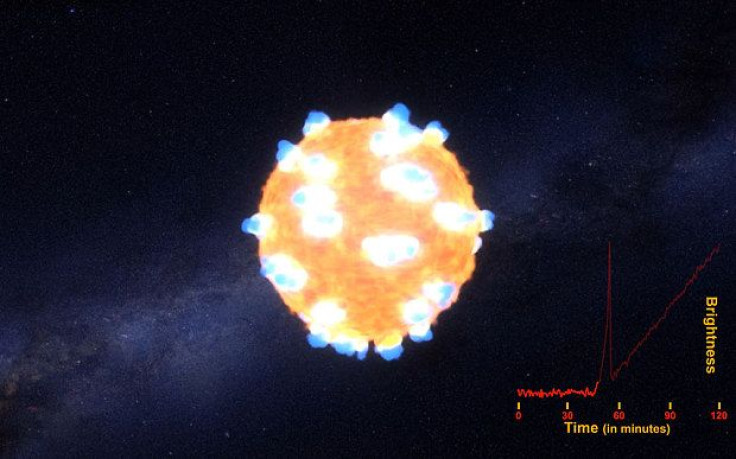Astronomers capture on space telescope visible light from 2 stars that just exploded

Scientists saw for the first time stars explode in visible light. Prior to this landmark celestial event, astronomers witnessed only a supernova through the collection of emitted x-rays from the exploding star.
However, on Monday, scientists at the NASA Ames Research Center saw through Keppler Space Telescope the explosion of two old stars. They captured the shockwaves which are said to be over 270 times the Sun’s radius and 750 million light years away from Earth, reports The Telegraph.
Dr Brad Tucker, co-author of the study published in the Astrophysical journal, recounts to ABC News, “They were actually looking at another exploding star and one happened to go right off in the exact patch of sky in the exact moment they were looking at it.
With the explosion, the supernova began to create elements of the periodic table such as platinum, gold and silver. Tucker describes it as the moment “when we can see the periodic table happening,” the process of creating new elements and a switch from fusion to fusion.
The team, led by Peter Garnavich, astrophysics professor at the University of Notre Dame, caught the blast, which was less than one hour, by analysing the light taken in by the telescope every 30 minutes over a three-year period and from 500 distant galaxies. Their field of vision included about 50 trillion stars.
Garnavich says they caught the explosion of the two supernovas the KSN 2011a and the KSN 2011d. Both are massive red supergiants 300 and 500 times the Sun’s size, respectively. He points out, “To put their size into perspective, Earth’s orbit about our sun would fit comfortably within these colossal stars.”
The cores of these old stars run out of fuel for nuclear reactions, explains NASA. Gravity would cause it to collapse into a dense neutron star that sends out a shock wave of energy that the scientists just witnessed.






